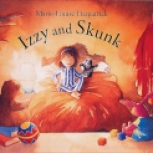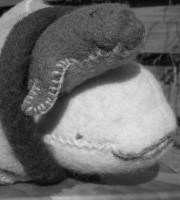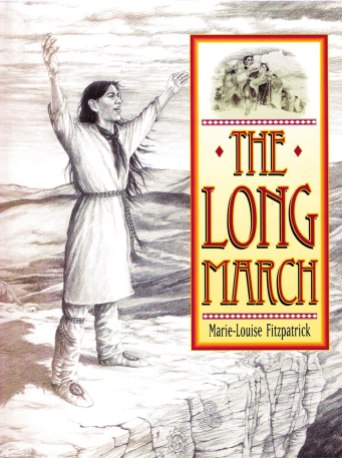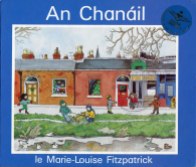For any picturebook writers hiding amongst the many NaNoWriMo-ers out there this November, this is a letter cobbled together from my replies to questions I’ve been getting from first time picture book authors. Recently I’ve had a rush of queries, many of which were about commissioning illustrations. My replies are based on 27 years working as a picturebook author; however, the publishing business is changing rapidly and other folk may have different experiences/opinions, so get Googling to see what everyone else says!
Dear First-time Picturebook Author,
The good news is that you do not need to commission your own illustrations. You submit your text to publishers or to an agent who submits it on your behalf. If a publisher takes it, they will match your work to an illustrator, they will deal with the illustrator, they will pay the illustrator. The only publisher I have ever heard of suggesting writers find their own illustrator is An Gúm, the Irish language/government owned publisher, and that was years ago. Occasionally a well-known writer will team up with a well-known illustrator and suggest to a publisher they work on a book together, but that is a different thing altogether.
So forget trying to find an illustrator! It’s the publisher’s job to do that, not yours. That is the way the industry works. And yes, in picturebooks the royalties are split between author and illustrator.
It’s possible you feel your text needs the illustrations to work? Well of course it does! That is completely normal with a picturebook and editors are used to reading texts. You don’t need to /should not add detailed explanations of what you think the illustrations would look like – the illustrator is supposed to be free to react to your text and interpret it. However, sometimes there is something you may need to flag – for instance, the child in the story is playing with a red ball but it is never mentioned in the text. The action of the ball – which we will read visually – forms a vital part of the narrative, hitting things, breaking things, and explains gaps in the text. If your text works this way then do add notes explaining what is happening in the illustrations, but keep them very brief and to the point.
Do you have a strong idea of size/shape of your book, and of the placement of the text? If this is because it is integral to your idea then you should indicate it and why. Otherwise the size and design of book will be decided by the publishers/design editor.
Editors are really big on picturebooks written and illustrated by the same person, so should you have a go at illustrating it yourself? If you are a talented illustrator/artist then I would certainly have a go at illustrating it; otherwise don’t even consider it. (By talented, I mean professional or capable of achieving a professional standard.) Editors like books illustrated and written by the same person because of the cohesion and integration that usually brings to the idea; the author/illustrator is likely to come up with concepts which you won’t get from a writer and illustrator working separately. To this end editors will often encourage illustrators they work with to try their hand at writing, but I have never heard of an editor encouraging a writer who has never shown any artistic ability to try illustrating their own work. Picturebook art, no matter how simple the style, takes a lot of hard work, skill, and time. Some people might take as little as 2 or 3 months to illustrate a book, I take 8 – 10 months, other illustrators take a year or more.
By the way, if you are an illustrator/writer you should produce rough art (simple pencil sketches) for your idea and maybe two finished pieces – don’t do finished art for the entire book. If you find a publisher for it many things will be changed and you may have to do the whole lot again.
The not so good news is that the children’s book industry is awash with people trying to place picturebook texts and novels at the moment. I don’t say that to put you off but to encourage you to concentrate on crafting/writing the best idea and text you can before trying to place it. Just like the illustrations, developing a great text takes time and skill. My earliest books were developed over years and years. Izzy and Skunk took rewrite/re-rough after rewrite/re-rough. It was 7 years before I figured out the right way to end it and finally found a publisher for it. I have no idea how many rejection slips it got along the way, but I did gather up some useful comments amongst the ‘no thank-yous’ which helped me get there. You, Me, and the Big Blue Sea took 9 years of revising and revisiting, which included letting go my (strong) inclination to write it (badly) in rhyme, and realising the book needed to go from portrait shape to landscape. It was finally taken by a publisher who had previously rejected it. Silly Mummy, Silly Daddy was rejected at least 24 times. My niece Beth, heroine of that book, was 2 years old when I got the idea, and 16 when it was finally published. *
These days my skill levels are much higher and I can develop ideas relatively rapidly, but they still take time and attention to get right, I still like to mull them over, let them sit with me a while. And I still get rejections, only now they land in my inbox rather than on the hall floor.
When you have given your idea/text plenty of time and hard work and sweat, and it is the VERY BEST you can possibly make it, take some more time to do your homework about approaching publishers and agents. Most publishers and agents have clear guidelines on their websites setting out what kind of ideas they are looking for/not looking for, and how they like them presented.
Best of luck and happy writing, Marie-Louise
* For clarity’s sake I should say that I got all three of these book ideas in the same year (1992) and developed them simultaneously, while working on my third book, The Long March, doing many, many illustration projects for an educational publisher, and also part-time teaching. I brought the ideas (physically, because that was the norm then) around the publishers in London on two occasions, once in 1994, again in 1998. After that I got an agent and she began showing them after I reworked them yet again. There was a fourth idea which I ditched very early on, and then a fifth, I’m a Tiger Too, which I developed more quickly and which was taken by the first publisher I showed it to. So the development work on each of those early ideas was a month here, a month there, two months here, two weeks there – months and months of work with long gaps inbetween each bout. The long gaps inbetween were at least as important as the periods of actual work because time away from the idea would throw up sharply exactly what wasn’t working and suggest what might. Basically I was developing skills and learning my craft by working and reworking all these ideas; I was finding my personal writing ‘voice’ and also my visual style. At some point everything began to click into place, the ideas were working and publishers began to take real interest.

Idea1992, published 2000

Idea 1992, published 20020

Idea 1992, published 2006

Idea 1996, published 2001
On Friday I will post links to some organisations, websites and blogs I like and which you may find useful.






















